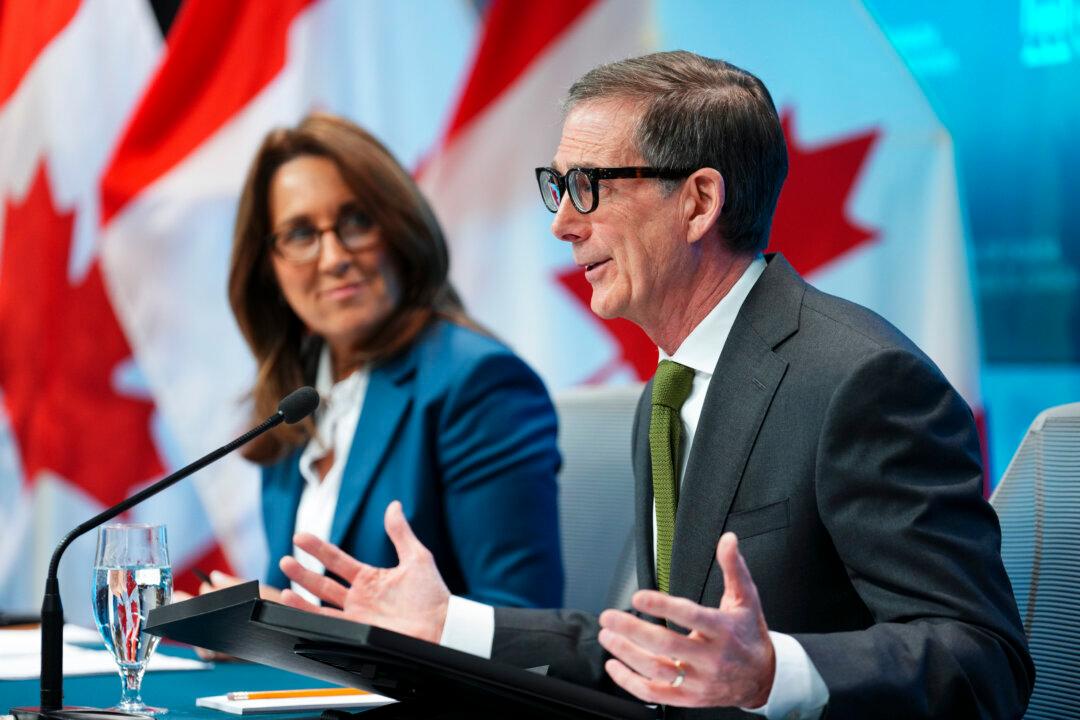Canada’s housing affordability crisis focuses predominantly on the ownership market, but over 30 percent of Canadians live in rental housing, whose affordability has also worsened.
Housing market analysts have long pointed to a lack of supply as the key issue to resolve, and CIBC’s deputy chief economist Benjamin Tal says not enough attention is being placed on the rental market.
“You cannot have an affordability solution without a rental solution. Rental must be a big part of the solution when it comes to overall affordability in Canada, and we have a crisis that we have to deal with,” he told The Epoch Times.
“You will never reach affordability in Canada, especially in the big cities, without a renter solution,” he said. “The more we talk about people willing to live in apartments, the better the situation will be.”
Tal says more two- and three-bedroom rental apartments need to be built that can accommodate families for longer rental periods.
He expects that rents will climb from already-expensive levels and that demand will be coming from families, not just individuals, going forward.
Rentals website rentals.ca and Bullpen Research & Consulting, a boutique residential real estate advisory firm, reported in their February national rent report that the average rent for all Canadian properties listed on rentals.ca was $1,807 per month, an annual increase of 4.4 percent.
“The largest growth continues to be for single-family rentals, as many potential buyers choose to rent, fearing the ownership market has gotten too frothy,” the report stated. A Feb. 17 report from the Parliamentary Budget Officer estimated that in December 2021, average house prices in Hamilton, Toronto, Halifax, and Ottawa were more than 50 percent above affordable levels.
But just as Vancouver and Toronto lead Canada in unaffordable housing markets, rent is also the highest in the country there at $2,550 per month and $2,317 per month respectively. Rents increased year-over-year by 16.2 percent in Vancouver and 14.5 percent in Toronto, according to the report.
The report gave the caveat that rent increases are biased to be high due to recovering from when average rents “fell off a cliff during the worst of the pre-vaccine pandemic.”
Ben Myers, president of Bullpen Research & Consulting, points to a number of factors leading to rent increases, such as higher demand for larger properties as more people work from home, an overheating resale market, and interest rates being set to rise.
The rentals.ca report noted that another factor influencing greater demand for rentals is the “potential government intervention in the ownership market.”
Myers says the government may intervene when home prices skyrocket, as it did with the Ontario Fair Housing Plan in 2017.
Some of the latest measures discussed have been taxes on speculative purchases, a ban on foreign buyers, and tinkering with a capital gains tax on the sale of a primary residence.
“I don’t know what it’s going to be, but the potential is there when pricing is going up. People are wanting the government to do something,” he told The Epoch Times.
Pandemic Effects Wear Off
The national vacancy rate for apartments purpose-built for rental levelled off at 3.1 percent in 2021, according to the Canada Mortgage and Housing Corp. (CMHC) in its February 2022 rental market report published on Feb. 18. The vacancy rate had risen slightly in 2020 due to the pandemic, but now it is in line with its longer-run average.
“Rental affordability continues to pose a significant challenge across the country,” CMHC said. It defines an affordable dwelling as one where the rent is at most 30 percent of the tenant(s) gross income.
CMHC said rental affordability has deteriorated in most major cities since October 2020—rent growth has exceeded wage growth, and when adjusted for inflation, wages declined faster than rents.
Annual inflation in Canada in January came in at 5.1 percent.
Shelter is the most important of the eight major components that make up the consumer price index (CPI), from which the level of inflation is measured. An analysis by Statistics Canada in 2017 showed that shelter made up more than a quarter of the total expenditures that are in the CPI’s scope.
CMHC added that as average home prices have generally outpaced rents in most urban centres, “This deterioration likely increased the barriers to transition from rent to homeownership, particularly for lower-income households, further supporting rental demand.”





